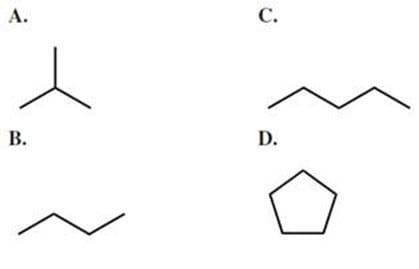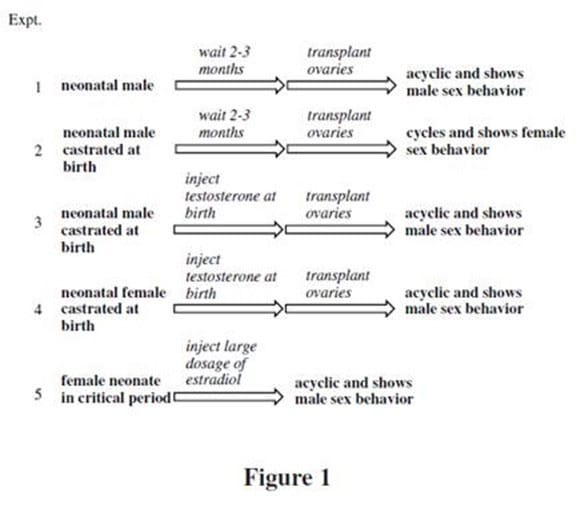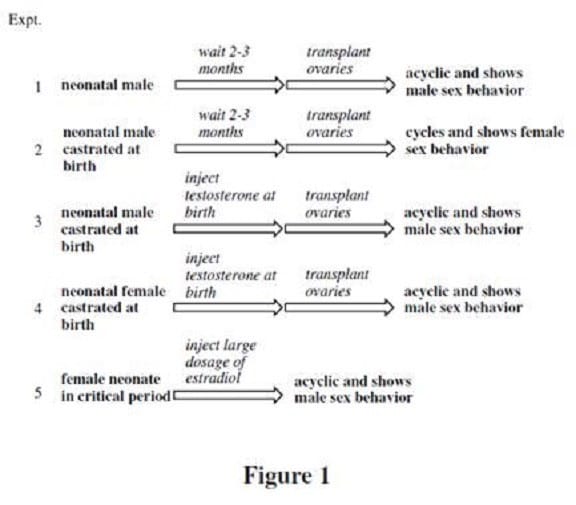Exam Details
Exam Code
:MCAT-TESTExam Name
:Medical College Admission Test: Verbal Reasoning, Biological Sciences, Physical Sciences, Writing SampleCertification
:Medical Tests CertificationsVendor
:Medical TestsTotal Questions
:812 Q&AsLast Updated
:Apr 16, 2025
Medical Tests Medical Tests Certifications MCAT-TEST Questions & Answers
-
Question 471:
Which of the following addictive drug is sometimes injected for relief from a severe pain?
A. Heroin
B. Alcohol
C. Aspirin
D. Nicotine
-
Question 472:
The endosymbiosis theory proposes that mitochondria originated through the engulfing of aerobic prokaryotes by anaerobic host prokaryotes. Many of the enzymes required for aerobic respiration are located on the inner membrane of the
mitochondria. Where would these enzymes, or their precursors, most likely have been found three billion years ago (prior to endosymbiosis)?
A. In the cytoplasm of the anaerobic prokaryotic host cells
B. On the plasma membrane of the anaerobic prokaryotic host cells
C. On the plasma membrane of the aerobic prokaryotic engulfed cells
D. In the cytoplasm of the prokaryotic aerobic cells
-
Question 473:
A mountain climber living at sea level ascends to a very high altitude during the course of a day long climb. By the end of the day, all of the following acclimatizations will occur EXCEPT:
A. increased tidal volume.
B. increased respiration rate.
C. right shift of the hemoglobin dissociation curve.
D. increased concentration of erythropoietin in the blood.
-
Question 474:
At its isoelectric point, an amino acid in an electric field will migrate towards the:
A. anode.
B. cathode.
C. basic region.
D. it will not migrate.
-
Question 475:
Which of the following species will form the most stable radical?

A. Option A
B. Option B
C. Option C
D. Option D
-
Question 476:
A hydropathy plot indicates the hydrophilicity (negative values) and hydrophobicity (positive values) of different regions of a protein. According to the hydropathy plot below, how many cellular membrane spanning regions are possible in this protein?

A. 1
B. 2
C. 3
D. 4
-
Question 477:
Before birth, the rodent brain is sexually undifferentiated. It is only in the first few days following birth, during a period referred to as the critical period, that the rodent brain differentiates along male or female lines. The hormone testosterone plays a critical role in this development. Specifically, sexual differentiation is determined by the presence of estradiol, an estrogen derivative of testosterone, in certain areas of the brain. Testosterone is converted to estradiol in critical brain cells that contain the enzyme aromatase. To study the effects of testosterone on the neonatal rodent brain, the following experiments were conducted: The above research, combined with additional studies, concluded that testosterone has two "organizational" effects on the male rodent brain: Defeminization Moderate levels of testosterone-derived estradiol during the critical period are sufficient for defeminization of the brain. Defeminization of the rodent brain results in loss of estrogen positive feedback on LH and FSH secretion and the ensuing loss of cyclicity, as well as loss of female sex behavior. Masculinization High levels of estradiol due to high levels of testosterone during the critical period results in masculinization of the brain. Masculinization leads to the induction of male sex behavior including antagonism towards other males and the mounting of females.

Steroid hormones bind to receptors in the nucleus and directly regulate:
A. the transcription of mRNA.
B. the translation of protein.
C. the production of cAMP.
D. the replication of DNA.
-
Question 478:
Before birth, the rodent brain is sexually undifferentiated. It is only in the first few days following birth, during a period referred to as the critical period, that the rodent brain differentiates along male or female lines. The hormone testosterone plays a critical role in this development. Specifically, sexual differentiation is determined by the presence of estradiol, an estrogen derivative of testosterone, in certain areas of the brain. Testosterone is converted to estradiol in critical brain cells that contain the enzyme aromatase. To study the effects of testosterone on the neonatal rodent brain, the following experiments were conducted:

The above research, combined with additional studies, concluded that testosterone has two "organizational" effects on the male rodent brain: Defeminization Moderate levels of testosterone-derived estradiol during the critical period are sufficient for defeminization of the brain. Defeminization of the rodent brain results in loss of estrogen positive feedback on LH and FSH secretion and the ensuing loss of cyclicity, as well as loss of female sex behavior. Masculinization High levels of estradiol due to high levels of testosterone during the critical period results in masculinization of the brain. Masculinization leads to the induction of male sex behavior including antagonism towards other males and the mounting of females.
A normal female rat injected with estradiol will respond by:
A. decreasing secretion of LH from the anterior pituitary.
B. increasing secretion of LH from the anterior pituitary.
C. decreasing secretion of GnRH from the hypothalamus.
D. increasing secretion of progesterone from the follicle.
-
Question 479:
Maternal lineage can be traced by sequencing the mitochondrial DNA because the mitochondrial genome is derived primarily from the mother. The best explanation for this phenomenon is that:
A. sperm have no mitochondria and thus cannot contribute to the mitochondrial genome of the offspring.
B. the zygote divides rapidly, diffusing the paternal mitochondria amongst many cells.
C. following penetration, the sperm derived mitochondria disintegrate within the egg.
D. all the genes coding for mitochondria are located on the X chromosome.
-
Question 480:
Before birth, the rodent brain is sexually undifferentiated. It is only in the first few days following birth, during a period referred to as the critical period, that the rodent brain differentiates along male or female lines. The hormone testosterone plays a critical role in this development. Specifically, sexual differentiation is determined by the presence of estradiol, an estrogen derivative of testosterone, in certain areas of the brain. Testosterone is converted to estradiol in critical brain cells that contain the enzyme aromatase. To study the effects of testosterone on the neonatal rodent brain, the following experiments were conducted:

The above research, combined with additional studies, concluded that testosterone has two "organizational" effects on the male rodent brain: Defeminization Moderate levels of testosterone-derived estradiol during the critical period are sufficient for defeminization of the brain. Defeminization of the rodent brain results in loss of estrogen positive feedback on LH and FSH secretion and the ensuing loss of cyclicity, as well as loss of female sex behavior. Masculinization High levels of estradiol due to high levels of testosterone during the critical period results in masculinization of the brain. Masculinization leads to the induction of male sex behavior including antagonism towards other males and the mounting of females.
An adult male rat that is acyclic is observed to mount females. However, the rat also allows itself to be mounted by male rats. According to the passage, the most likely explanation for these observations is that:
A. the rat is hermaphroditic, with both male and female sex organs.
B. the rat has been demasculinized.
C. the rat has been masculinized but not fully defeminized.
D. the rat has been defeminized but not fully masculinized.
Related Exams:
Tips on How to Prepare for the Exams
Nowadays, the certification exams become more and more important and required by more and more enterprises when applying for a job. But how to prepare for the exam effectively? How to prepare for the exam in a short time with less efforts? How to get a ideal result and how to find the most reliable resources? Here on Vcedump.com, you will find all the answers. Vcedump.com provide not only Medical Tests exam questions, answers and explanations but also complete assistance on your exam preparation and certification application. If you are confused on your MCAT-TEST exam preparations and Medical Tests certification application, do not hesitate to visit our Vcedump.com to find your solutions here.